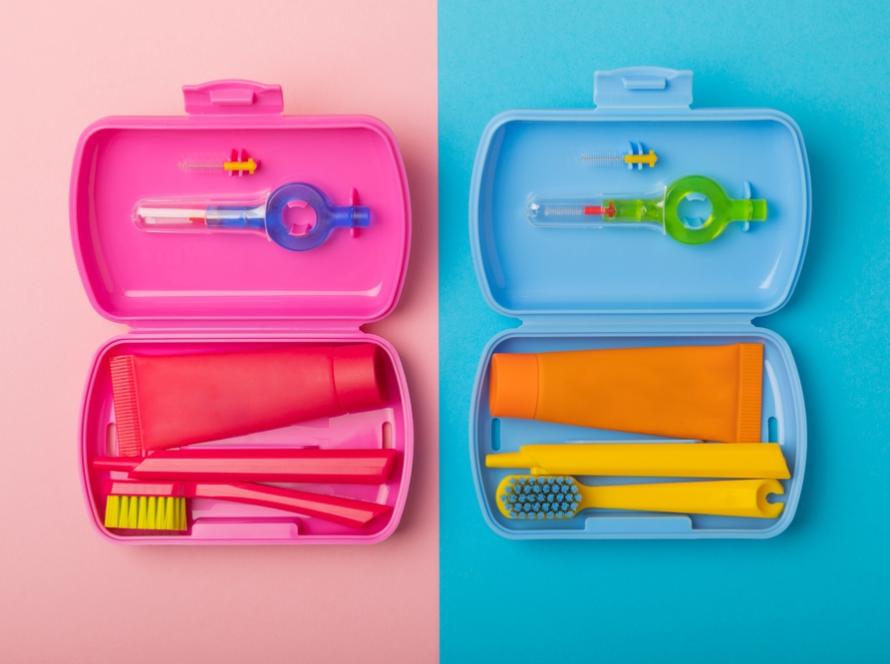February is National Children’s Dental Health Month, making it the perfect time to focus on developing strong oral hygiene habits for kids. At Woodlawn Kids Dental, we’re passionate about helping families improve their children’s oral health in fun and engaging ways. This year, we are excited to introduce ” The Fantastic February Flossing Challenge” to encourage children to make flossing an exciting part of their oral hygiene routine.
Flossing is a critical part of maintaining kids’ oral hygiene. Yet, many parents find it challenging to introduce this habit. That’s why we’ve compiled age-appropriate tips, advice for safe flossing, and recommendations for the best flossing tools. Whether you’re just introducing flossing or fine-tuning your child’s routine, these insights can help make the process smooth and enjoyable.
Flossing Tips by Age Group
1. Toddlers (Ages 2-3)
At this stage, your child may not have a full set of teeth, but flossing should begin as soon as two teeth touch. Parents should:
- Use soft, flexible flossers designed for small mouths.
- Gently floss their teeth while the child is seated or lying down for better control.
- Keep the experience positive by offering praise or turning it into a game.
Safety Tip: Always supervise toddlers during flossing to ensure they don’t mishandle the floss or attempt to use it unsafely.
2. Preschoolers (Ages 4-6)
Preschoolers can begin learning about flossing as part of their growing independence.
- Use brightly colored, kid-friendly floss picks to make the process fun.
- Let them try flossing on their own under close supervision.
- Encourage consistency by flossing at the same time each day, such as after brushing at bedtime.
3. Elementary Schoolers (Ages 7-12)
By this age, most children can floss independently with guidance.
- Transition to traditional dental floss or waxed floss if your child is ready for it.
- Teach proper technique: gently slide the floss between teeth and form a “C” shape to clean along the gum line.
- Consider floss holders or water flossers if your child has braces or struggles with traditional floss.
4. Teenagers (Ages 13+)
Teens should be flossing daily as part of their regular oral care routine. To encourage consistency:
- Explain the importance of flossing in preventing cavities, gum disease, and bad breath.
- Let them choose their preferred flossing tools, such as flavored floss or high-tech water flossers.
Selecting the Right Type of Floss for Your Child
Choosing the right floss can make all the difference in building a successful flossing habit. Here’s a guide to help:
- Soft Picks and Flossers: Perfect for toddlers and preschoolers, as they’re gentle on gums and easy to handle.
- Waxed Dental Floss: A great option for older kids and teens because it slides smoothly between tight spaces.
- Water Flossers: Ideal for kids with braces or those who struggle with manual dexterity, ensuring a thorough clean.
When Flossing Isn’t Recommended
While flossing is essential for most children, there are a few situations where it may not be appropriate:
- If your child has sores, swelling, or injuries in their mouth, avoid flossing until the area heals.
- In cases of significant pain or resistance, consult your children’s dentist to rule out underlying issues such as tooth decay or gum disease.
The Fantastic February Flossing Challenge: Making Dental Hygiene a Family Adventure!
Woodlawn Kids Dental is thrilled to invite families to join The Fantastic February Flossing Challenge this February! Let’s turn flossing into a fun and rewarding activity that your kids will love—and that their teeth will thank you for!
Here’s how you can participate right at home:
1. Kick Off the Challenge
Set the goal: floss every day for the entire month of February. Create your own family flossing tracker using paper, stickers, or even a calendar to keep track of your progress. The key is making it visible and fun—hang it on the fridge or somewhere your kids can proudly see their progress every day.
2. Make It Fun
Turn flossing into a mini celebration each day!
- Let your kids choose fun-themed flossers or colorful floss picks.
- Play a favorite song or set a timer to make sure they floss for long enough.
- Create a “Floss Dance,” and let them show off their moves after they floss!
3. Celebrate Small Wins
Reward your child’s effort along the way to keep the momentum going.
- After a week of consistent flossing, give them a small prize, like an extra bedtime story, their favorite dessert, or a fun activity like a game night.
- At the end of the challenge, make them feel like a flossing superstar with a personalized “Flossing Champion” certificate or crown them the “King or Queen of Clean Teeth!”
Why Take the Challenge?
The Fantastic February Flossing Challenge isn’t just about clean teeth (though that’s a big perk!). It’s about helping your kids build lifelong habits, creating family bonding moments, and proving that even the simplest routines can be fun when you add a little creativity.
Start your flossing adventure today and make February a month full of bright smiles and healthy habits. Together, let’s show those teeth who’s boss!
Tips for Parents Navigating Flossing
- Start Early: Introduce flossing as soon as teeth begin to touch.
- Be Patient: It may take time for your child to become comfortable with flossing. Offer encouragement and demonstrate proper technique.
- Make It Fun: Sing a song, use floss picks with fun designs, or make a game out of reaching all the teeth.
- Stay Involved: Supervise flossing until you’re confident your child is flossing effectively and safely.
Take Action for Your Child’s Oral Health
Flossing plays a key role in kids’ oral care, and February is the perfect time to reinforce this habit.
Schedule an appointment with Woodlawn Kids Dental today to ensure your child’s smile stays bright and healthy. Together, we can make dental hygiene fun and rewarding for the whole family!


